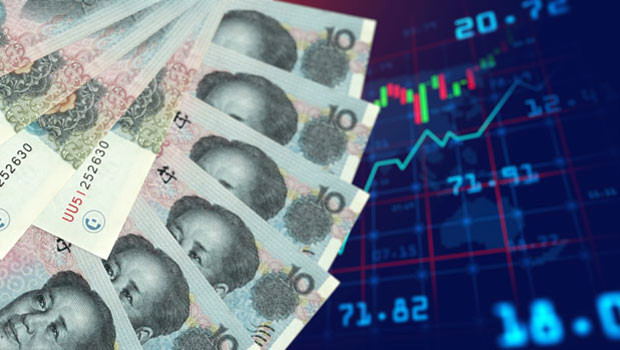
Source: Sharecast
Gains in Chinese exports and a rebound in imports for June provided some support, while Singapore narrowly avoided a technical recession, citing continued uncertainty.
“It seems increasingly evident that president Trump uses tariffs primarily as a way to command the news cycle and maintain visibility,” quipped TickMill market strategy partner Patrick Munnelly.
“He prefers not to engage in lengthy and complicated trade negotiations that aim for mutual benefits.
“Why go through that process when he can threaten a 30% tariff on a Saturday morning and dominate the news for the whole weekend?”
Munnelly said markets in Asia, recognising that as largely a negotiating strategy, only reacted moderately.
“It's unclear how Brussels can meet Trump's requests, partly because his actual desires remain ambiguous.
“The EU's tariffs on US products are already minimal, leaving little room for reductions, and conceding to domestic tax and regulation exemptions poses significant political challenges.
“There’s a chance the market’s calm response might ultimately misfire.”
Investors believed Trump was eager to avoid another market plunge, Munnelly added, and could relax tariffs when necessary.
“However, with US stocks reaching record levels and bond yields easing, Trump might justifiably think the markets are aligned with him and appreciate how ‘wonderful’ tariffs can be.
“Regardless, it appears likely that the US effective tariff rate will resemble the Smoot-Hawley tariffs, which significantly contributed to the Great Depression, and we will see if Trump is correct and the vast majority of economists are mistaken.
“The US trade deficit has yet to be resolved in a straightforward manner.”
Markets mixed as Trump’s tariff moves weigh on sentiment
In Japan, the Nikkei 225 fell 0.28% to 39,459.62, dragged lower by sharp losses in tech and e-commerce names.
Mercari dropped 5.39%, Nexon slid 4.17%, and Sumco Corporation declined 3.82%.
The broader Topix index was nearly flat, down 0.02% at 2,822.81.
Meanwhile, 10-year Japanese government bond yields rose to their highest level in nearly two months.
Mainland Chinese markets were mixed - the Shanghai Composite rose 0.27% to 3,519.65, buoyed by strong gains in real estate and industrial firms.
Greenland Holdings surged 10.1%, Wolong Real Estate Group climbed 10.06%, and Guodian Nanjing Automation also gained 10.06%.
However, the Shenzhen Component dipped 0.11% to 10,684.52.
Hong Kong’s Hang Seng Index edged up 0.26% to 24,203.32.
China Shenhua Energy rose 5.16%, Hansoh Pharmaceutical Group advanced 3.49%, and Kuaishou Technology gained 3.33%.
In South Korea, the Kospi 100 led regional gains, up 1% at 3,229.16, driven by a rally in Samsung affiliates.
Samsung Fire & Marine Insurance jumped 9.51%, Samsung Life rose 6.91%, and Samsung C&T added 6.62%.
Australia’s S&P/ASX 200 eased 0.11% to 8,570.40.
Mining and healthcare stocks weighed in Sydney, with South32 dropping 5.14%, Nanosonics falling 4.59%, and James Hardie Industries retreating 3.85%.
Across the Tasman Sea, New Zealand’s S&P/NZX 50 slipped 0.06% to 12,678.69.
Tourism Holdings fell 3.41%, Synlait Milk lost 2.99%, and SkyCity Entertainment Group shed 2%.
In currency markets, the dollar was last down 0.07% on the yen to trade at JPY 147.32.
It meanwhile gained 0.18% against its Australian counterpart to AUD 1.5229, and rose 0.33% on the Kiwi, changing hands at NZD 1.6698.
Oil prices advanced, with Brent crude futures last up 0.85% on ICE at $70.96 per barrel, and the NYMEX quote for West Texas Intermediate rising 0.88% to $69.05.
China exports surge and Singapore GDP rebound contrast with Japan machinery weakness
In economic news, China's exports exceeded expectations in June as companies moved quickly to take advantage of a temporary pause in tariffs before an August deadline.
Overseas shipments rose 5.8% year-on-year in dollar terms, surpassing the 5% increase forecasted in a Reuters poll, according to customs data released on Monday.
Imports also rose for the first time in 2025, up 1.1% from a year earlier.
While slightly below expectations, the return to positive import growth signals tentative recovery in domestic demand.
Japan’s economic signals were more subdued.
Core machinery orders, a key indicator of business investment, declined by 0.6% in May from the prior month, Cabinet Office data showed.
The drop was smaller than the 1.5% contraction expected by economists but followed a steep 9.1% fall in April.
On a year-on-year basis, however, core orders rose 4.4%, outpacing forecasts.
Total machinery orders received by 280 domestic manufacturers climbed 3.8% month-on-month, pointing to some resilience in broader industrial demand.
Elsewhere, Singapore narrowly avoided a technical recession in the second quarter.
The economy grew 1.4% from the previous quarter, reversing the 0.5% contraction seen in the first three months of the year.
On an annual basis, GDP expanded 4.3%, beating the 3.5% rise forecast in a Reuters poll and accelerating from 4.1% in the first quarter.
Growth was supported by stronger performance in manufacturing and construction, though officials warned of lingering uncertainty in the broader outlook.
Reporting by Josh White for Sharecast.com.